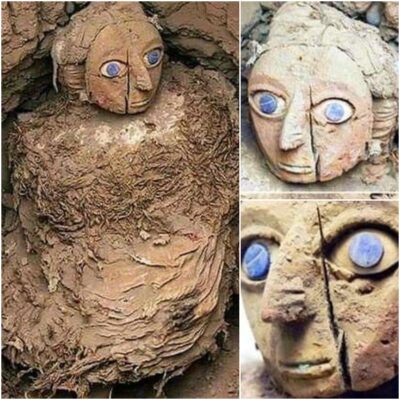The planet experienced a severe winter in 536. Temperatures plunged and the sun was obscured by a massive fog that barred its rays from reaching the earth for 18 months, 24 hours a day, earning it the nickname “the year of darkness” in the New Scientist. Over the course of the next ten years, this climate catastrophe had an impact on Europe, the Middle East, and even some portions of Asia. In fact, “this climatic downturn may well have profoundly altered the course of history.” But what caused this global climate cataclysm?

The Triumph of Death by Pieter Bruegel the Elder. ( Public domain )
References in Historic Texts to a Global Climatic Cataclysm
Michael McCormick, a medieval historian, was quoted in Science from back in 2018 as saying that 536 “was the beginning of one of the worst periods to be alive, if not the worst year.” The historian and church leader John of Ephesus stated in his historical work Historiae Ecclesiasticae, which translates as “Church Histories,” that “the sun became dark and its darkness lasted for 18 months.”
Between the years 535 and 536, a series of major climatic events took place that could easily be described as a global cataclysm with catastrophic consequences. “Each day, it [the sun] shone for about four hours, and still this light was only a feeble shadow. Everyone declared that the sun would never recover its full light again,” detailed Ephesus.
In fact, according to Brandon Specktor in LiveScience, “the fall of the Roman Empire may have been a partial result of the decade of famine and plague that began in A.D. 536”. In actuality, the temperature drop marked the start of the coldest decade to have occurred in the previous 2,000 years.
These extremely low temperatures, which in the summertime dropped as low as 1.5 C, caused crop failures and famines that were documented all across the world. A terrible time to be alive, Justinian’s Plague spread throughout the Mediterranean just a few years later, killing up to 100 million people in 541 AD.

Destruction from The Course of Empire, by Thomas Cole. ( Public domain )
The Darkness and Severe Winter of 536
This climatic catastrophe is not only mentioned by John of Ephesus. Procopius, a late antiquity Byzantine scholar and historian who flourished between 500 and 565 AD, also makes reference to the strange behavior of the sun in 536 AD.
Believing it to be a bad sign foretelling coming events, Procopius stated “and it came about during this year that a most dread portent took place. For the sun gave forth its light without brightness, like the moon, during this whole year, and it seemed exceedingly like the sun in eclipse, for the beams it shed were not clear.”
Zacharias of Mytilene, who wrote a chronicle in the sixth century and mentions the “Dark Sun” between 535 and 536 AD, is another author to make mention of the climate catastrophe of 536.
“The sun began to be darkened by day and the moon by night, while the ocean was tumultuous with spray from the 24th of March in this year till the 24th of June in the following year… And, as the winter was a severe one, so much so that from the large and unwonted quantity of snow the birds perished… there was distress… among men… from the evil things.” Zacharias of Mytilene (Chronicle, 9.19, 10.1)”
These three excerpts are but a sample of the various accounts from different parts of the world that were written during the relevant time period. The sun was consistently described as becoming dimmer and losing its brightness. It was also frequently characterized as having a bluish hue.
The moon’s impacts were also seen. Simply put, the brightness had diminished. Heat on the globe decreased as a result of the reduction in light. According to Zacharias of Mytilene, a lack of rain and a particularly long winter caused crop failures and the death of birds and other creatures. Many places were affected by famine and pestilence, which resulted in a great deal of deaths.
Detailed accounts of the event were also made in China and Japan. Massive droughts and subsequent deaths were brought on by a lack of water. Numerous thousands of square miles lost their fertility. In the province of Xi’an, 80% of the inhabitants perished, and the survivors had to eat corpses to survive, according to the Beishi chronicles, the official history of the Northern Dynasties. It was the year 536.
The disastrous incident also affected Australia, Americas, Europe, Africa, and Korea. Although written records are not available for all nations, geological and archaeological data showed signs of climatic shifts. For instance, research on tree trunks revealed that the year 536 AD had been the coldest in 1,500 years.

Massive volcanic eruption. ( James Thew / Adobe Stock)
Trying to Understand What Caused the Darkness
Why did that happen is a key question in this whole situation. One hypothesis for the worst year in history, the climate catastrophe of 536, is that a big asteroid or comet impact occurred and landed in the sea. However, there are no conclusive solutions for this catastrophe (if it had hit land there would be evidence of a crater).
One supporter of this theory is geologist Dallas Abbott, who bases his argument on data he discovered while examining Greenland ice cores. The sun’s poor illumination and the absence of tsunamis during this time, which would have happened if an asteroid had landed in the ocean, would be unaffected by this, nevertheless.
A massive volcanic explosion has also been proposed as a possible explanation for the light’s dimming because of the dust that would have been released into the atmosphere. Krakatoa, an Indonesian island situated between Java and Sumatra, is one potential candidate. Indeed, an old volcano is mentioned in the 1869 book Pustaka Raja Purwa, also known as the “Book of the Ancient Kings.”
“There was a furious shaking of the earth, total darkness, thunder and lighting… Then came forth a furious gale together with torrential rain and a deadly storm darkened the entire world… When the waters subsided it could be seen that the island of Java had been split into two, this creating the island of Sumatra.”
The fact that this text was created in the 19th century may be to blame for the mistakes in the time reference, even if it refers to the year 416 AD rather than 535 AD.

On the left: The ice core drilling site at Colle Gnifetti in Switzerland. On the right: A section of the ice core used to decipher evidence about the climate cataclysm of 536. (Nicole Spaulding / CC BY 4.0 )
Searching for Answers: Understanding the Climate Cataclysm of 536
Although it is unclear whether a conclusive solution will ever be discovered, scientists have continued to search for it. The fact that this global climate catastrophe is essentially unknown is one odd aspect of it.
Why isn’t this climatic event covered in textbooks? Why hasn’t it been the subject of a ton of research? It might be because it serves as a reminder of our frailty as humans and the reality that nature still controls us, despite how strong and “advanced” mankind grows.
Although historians have long been aware of this climate catastrophe, they have been baffled by its causes. The Northern Hemisphere was covered in ash from a massive volcanic eruption in Iceland in 536, according to research published in 2018 on a 72-meter-long (253-foot) core of ice from a glacier in the Swiss Alps that serves as a logbook of both naturally occurring and human-caused events. In the years 540 and 547, there were two more eruptions. Their results were published in the journal Antiquity.
But, why does a volcanic eruption affect global temperatures? “When a volcano erupts, it spews sulfur, bismuth, and other substances high into the atmosphere, where they form an aerosol veil that reflects the sun’s light back into space, cooling the planet,” explains Ann Gibbons in Science.
According to the Antiquity study, by 640 the ice core shows traces of lead, which they concluded is evidence of a so-called “silver-smelting boom.” Live Science explains that this silver boom is a sure sign of “an economy rebounding in the darkness of starving, disease-stricken Europe, and the emergence of a new merchant class ready to trade in precious metals.” Humanity began to recover from the dire effects of the climatic conditions of 536.











